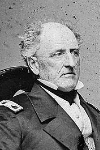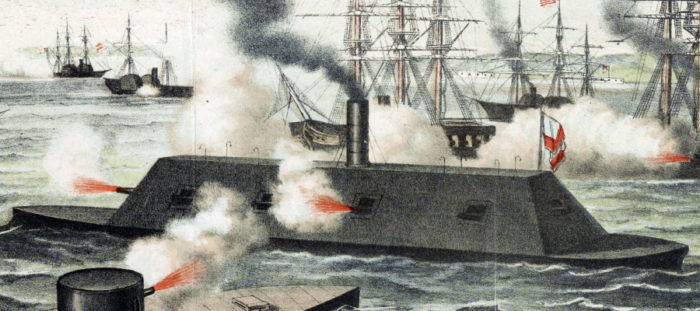
I have spent the last couple of weeks looking at the USS Monitor, and its connection to Capitol Hill. The question therefore arises: What connection does the Monitor’s famous adversary, the Merrimack, a.k.a. the CSS Virginia, have? Turns out, I found one– well, two. But we’ll start with the first one today.
Charles C. Meads was born about 1838 in Virginia. His father, James Meads, was a carpenter in the Navy, working in the Norfolk shipyard.
Charles would marry Anna around 1860, when he was 22 and she was 18. They would at first live with his parents. Their first child, Ida, would be born about 1861. The younger Meads clearly did not want to follow in his father’s footsteps, and thus became pretty much the opposite– a grocer. Unfortunately for him, he was just the right age to join the military when the Civil War broke out, and he found himself in the Confederate Navy. While this was a bit too close to his father’s occupation for comfort, Meads managed to secure a berth as yeoman, which meant he was responsible for all the paperwork that the ship required, as well as any other tasks that the captain could think of.
Meads was assigned to the newly-built CSS Virginia, the confederacy’s first iron-clad ship. His captain here was Franklin Buchanan [pictured above], former head of the Washington Navy Yard. Meads would be on board during the famous battle of Hampton Roads, though his work kept him safely out of the line of fire as the ship battled the Monitor to a draw. He remained part of the crew of the Merrimack until it was scuttled in May, 1862. Thereafter, he bounced around various jobs within the military, including a stint guarding the Rocketts Navy Yard in Richmond as part of the Virginia Infantry, rising to the rank of Corporal in his time. By the end of the war, however, Meads found himself exactly where he did not want to be: as a naval carpenter. He remained at Rocketts Navy Yard, and this is where he would end the war.

In January, 1870, Charles and Anna had a son, whom they named Charles C Meads, jr. Shortly thereafter, they moved north, to Baltimore. Here, they would have another child, Hattie. Charles had, by this time, resigned himself to his fate and was working as a carpenter, an occupation he continued to pursue after his move to Washington, which was in the midst of its post-war building boom, a few years later. By 1875 he was ensconced on Capitol Hill, living on 7th Street SE, between G and I Streets. A final son, Eugene, would be born here.
Like so many carpenters at the time, Meads soon became a builder. In 1885, the Evening Critic, in an article on District Govenment News announced that a building permit had been approved for Meads, for “three dwellings on North Carolina avenue, between Sixth and Seventh streets southeast.” The value of the buildings was to be $10,000.
Meads would prosper from here on out, building many houses around Capitol Hill. We will look at some of these next week.
